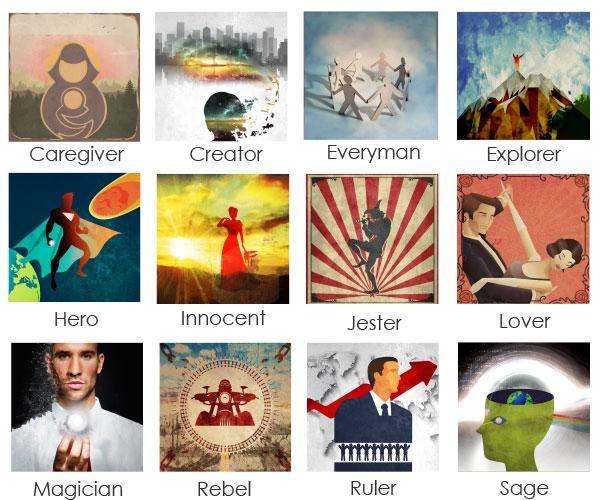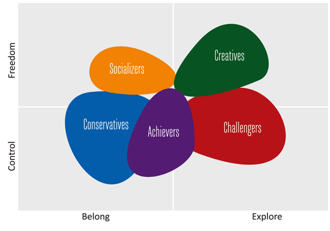5 Key Elements of a Successful Sustainability Campaign
Ever wonder how to create a more successful sustainability marketing campaign? Imagine if you could have an action plan that shows you exactly what to do to get the best results. In this article, you will discover five key elements to build that successful sustainability campaign through sustainability market research.
-
#1 Values-based targeting is essential to connect with the right audience
You are not your audience! What motivates you to act may differ substantially from your target audience. Concern yourself with your target audience; how does your audience benefit from supporting your sustainability campaign or buying your sustainable products?Well planned and well-placed communication highlights what your audience values. Sustainability market research delivers a clear understanding of the values that motivate your audience to listen and act. Those values will help you to build an emotional relationship between your audience and your campaign or product. The key component for this is sharing the right values that align with your audience's values.
At the same time, those values need to align with your campaign or sustainable products. Glocalities values-based research can help you do this. For example, our research shows that striving for good health and well-being are values that move one segment of the population (Conservatives) and human rights or climate change appeal to another segment (Creatives). By finding this sustainability sweet spot, you can identify and target the right audience and convey the most compelling message.
-
#2 Align the sustainability sweet spot with your brand purpose
Your brand purpose, the reason your company, brand or NGO exists, is what makes it unique. A multi-national like Unilever has shown that brand purpose can be the key differentiator for many of their brands. By using values-based research, Unilever has aligned seven FMCG brands with a defined consumer target audience that fits with a specific sustainability topic.As soon as you have identified your target audience, their values and their sustainability issues you can integrate this with your brand purpose. Start by identifying which sustainability topic is the most relevant for each of your brands. Continue with building brand propositions (communicate the benefit of your brand to your consumer) and test among people from your target audience.
These tests start a process of co-creation, being inspired and learning which sustainability message will align best with your company, your brand, and your target audience. This process can only be successful if it involves your leadership, employees and your customers.
-
#3 Find hooks and ideas to mobilize people
Reflect on your values, be self-aware and know your blind spot. As we said earlier, how you view the world may not be how your audience sees the world.In our Glocalities data, we see an over-representation of sustainability professionals in the value segment of Creatives: open-minded idealists who adhere to self-development and culture, with a similar mindset.
That is great but might also reflect 'bubble thinking.' The danger is that you are communicating in an echo pit. Be aware that messages that work for you might even detract people from other societal segments. As a sustainability professional, you need to reflect on your values and strengths and weaknesses to connect with other people. Find hooks and ideas to mobilize ‘other-minded’ people by stepping in the shoes of your audience.
-
#4 Tailor your message with archetypes
Neuroscience teaches us that our brain is hard-wired for stories. By using archetypes [deeply rooted communication frames], you will connect on an emotional level with your audience. Archetypes are ‘original patterns’ derived from the world of mythology that unlock the human experience. For example, scriptwriters from Hollywood movies use archetypes to create stories that resonate.One of those archetypes is the 'hero' who is on a journey to overcome challenges. The ‘hero’ archetype fits with specific brands and specific target audiences. Another example is the ‘caregiver’ who is compassionate and wants to help others.

These archetypes will help you create stories and convey what you want to achieve with your campaign or sustainable products. Your message will resonate on an emotional level with your audience and be more effective to get them to listen and act.
Various segments of your audience might identify with a particular archetype. So, know the differences between those archetypes and learn which values, meanings and personal traits align best with your audience needs.
-
#5 Use the right tone of voice and form alliances
Your tone of voice is critical to change attitude and behavior. A recent Glocalities study in coordination with Oxfam and Global Citizen showed that the general public clearly underestimates progress made concerning the SDGs (UN Sustainable Development Goals).Only 1% of the respondents in our global study knew that the number of people living in extreme poverty has reduced by more than 50 percent. So, although the developments in eradicating poverty are positive, this is rarely the message that reaches the public. People are rather pessimistic, and this is a barrier for further engagement.
To engage more frontrunners in the fight against poverty, it is therefore vital to also use an optimistic tone in messaging and communicate progress made. The archetype of the ‘ruler’ who takes the lead and the ‘magician’ who creates solutions and sets things in motion resonate strongly with the frontrunners.
For your sustainability market research you need to identify the segments of the population who are most receptive to your message, form alliances with these groups and help them mobilize other parts of the public. For example, Glocalities value-based research has identified the value-segment 'achievers' as an important group to share the 'end poverty' message in developing countries among a broader audience. Our values-based research will also guide you with using the right (social) media to reach this segment of the population.
In summary
To create a successful sustainability marketing campaign, you need sustainability market research that will help you to understand your target audience on a deep level. Know what values drive them to act. Align those values with your brand purpose and tell the stories using archetypes that resonate on an emotional level. Be aware that you are not your audience and think out of your bubble. So spend enough time on getting to know your audience. Find the sustainability sweet spot between your brand and what your audience values in life. Use archetypes to share the values, meanings and personal traits that will inspire your audience to listen and act.



